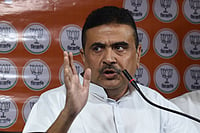As weather patterns shift, doctors are reporting a surge in flu cases across the country. However, many patients are foregoing Covid-19 testing, dismissing their symptoms as just a common cold.
Four years after the COVID-19 pandemic first gripped India, the viral disease continues to linger, with worrying spikes being reported in several northern states. While the rest of the country has largely returned to pre-pandemic normalcy on most socio-economic fronts, the government data reflects a steady surge of infections in this region.
With 1,158 active cases as of today, the immense nationwide machinery that was once urgently dedicated to combating COVID now seems to be gradually demobilising.
The national capital Delhi is at the centre of this latest uptick in cases. According to the Union Health Ministry, Delhi recorded 63 new COVID-19 cases on March 7th - the highest single-day tally the city has witnessed since May of last year. In the 15 days leading up to March 7, Delhi grappled with 459 cases, marking a stark rise from just 191 cases in the prior fortnight and 73 cases in the 15 days before that.
Delhi, however, is not an outlier in this struggle against the virus. The country's most populous state, Uttar Pradesh, has also been experiencing an escalation in Covid numbers. While the January 20 to February 4 period saw just 12 reported cases, the February 19 to March 5 window witnessed a surge to 164 daily cases on average.
The northern state of Bihar, too, is contending with a triple-digit rise in daily cases, as the Health Ministry's data indicates 103 new COVID-19 cases till March 7. This situation isn't restricted to the country's most densely populated regions alone. Rajasthan, where Chief Minister Bhajan Lal Sharma himself tested positive recently, has documented 226 cases over the past 15 days - a significant leap from the 96 and 27 cases logged in the preceding two fortnights respectively.
As the March 11th anniversary marking four years since the pandemic's onset in India approaches, the central government faces increasing pressure to reassess its COVID-19 strategies and resources. Having weathered multiple brutal infection waves, few in the country need reminding about the pandemic's potential to devastate lives and livelihoods alike.
While most households and businesses may no longer be grappling with the acute disruptions that defined the pandemic's early years, this latest regional resurgence serves as a sobering reminder that India's battle against COVID-19 is far from over.


























